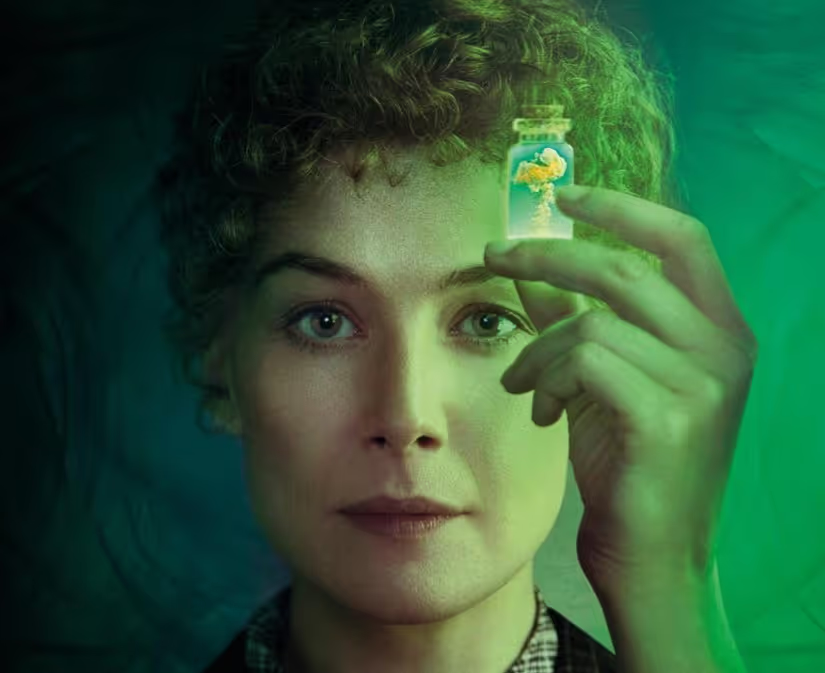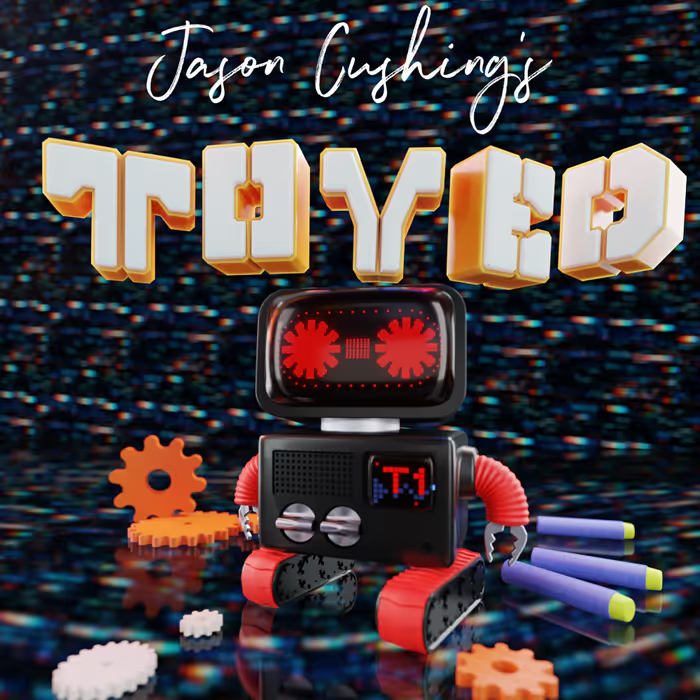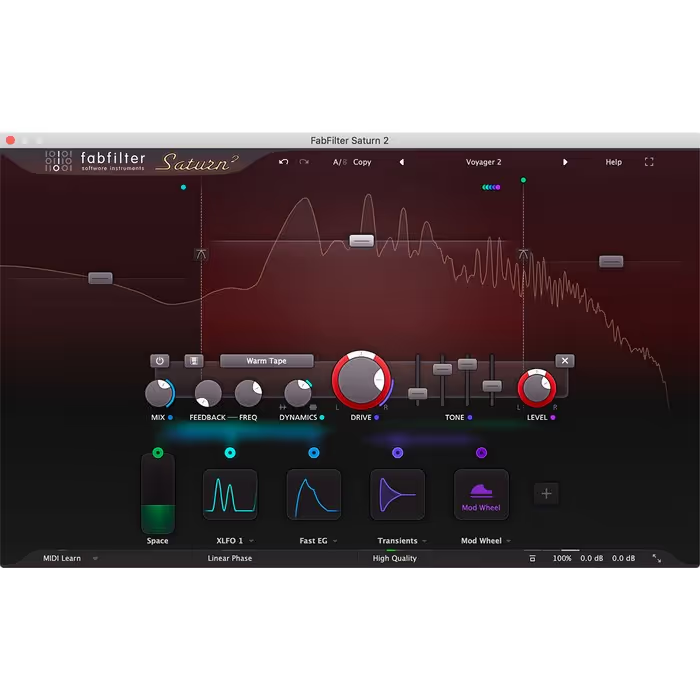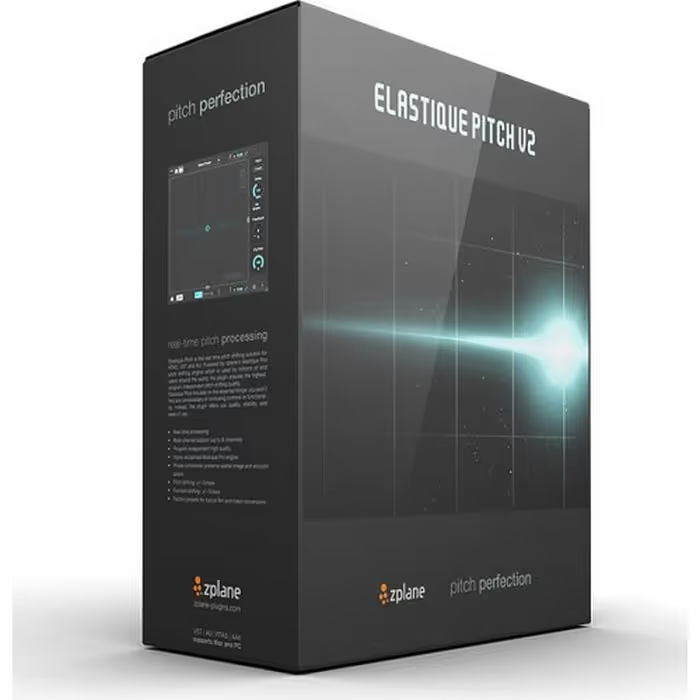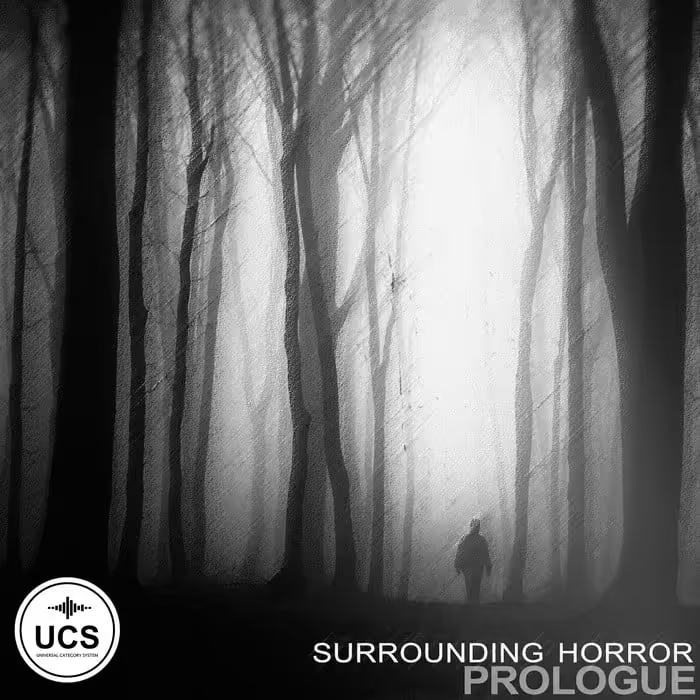“People who break ground in any field are people who are passionate about [that field], who take risks and explore things,” says sound supervisor/sound designer Steve Fanagan, M.P.S.E. He’s speaking of Marie Curie and the groundbreaking work by her and her husband Pierre Curie that led to the discovery of two new elements — Radium and Polonium — and furthered the understanding of the atom and atomic physics.
Director Marjane Satrapi unpacks Madame Curie’s complicated life in the biopic Radioactive, now available on Amazon Prime. The soundtrack blends the evolution of science and technology of the times with the fluctuating emotional landscape of Madame Curie’s life — from her hardscrabble efforts to prove the merit of her scientific work as a woman in a male-dominated field to finding a supportive and loving partner who shares her passion for science, her experience of that loss, her survival of scandal and social debasement, and her final triumph as a respected scientist. She herself has noted that “the way of progress was neither swift nor easy.”
Here, Fanagan talks about his adventures in capturing authentic sounds, finding inspiration in director Satrapi’s passion for filmmaking, and being part of the collaborative process that made Radioactive a compelling film.
Radioactive – Official U.S. Trailer | Prime Video
When you started on Radioactive, did you know that you wanted to record Marie Curie’s notebook? How did that whole adventure happen?
Steve Fanagan (SF): About two weeks after I started on the film, Jo Jackson (first assistant sound editor and sound effects editor on Radioactive) mentioned that a friend of theirs worked at the Wellcome Collection. They were talking about Jo’s sound work on the film and it came up that one of Marie’s notebooks was part of the Wellcome Collection. And so, at that point, I thought, ‘Ok, that’s kind of interesting.’
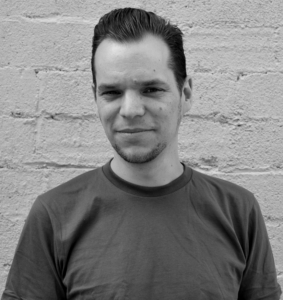
I had just moved to London to work on the film, so my knowledge of London was relatively limited. I had never been to the Wellcome Collection before. So one weekend while I was working, I just went over and had a look around. It’s this incredible collection of human history with a scientific leaning. The exhibitions are really interesting and geared toward people of all ages. It was a really interesting visit but I discovered that the library isn’t open on the weekend. So I didn’t have a concept of how this notebook was there and what would be involved.
I started to do a bit of research and realized that because this notebook was known to be radioactive, it’s not out somewhere that you can just see it. I did a bit of searching around on their website and through their archives and I found a contact. I reached out and said, ‘We are working on this film, and I’m interested in seeing the notebook and could I possibly record it. Would that be possible and if so, how do I go about it?’
I was put in touch with a few different people. This process stretched out over a few weeks; it didn’t happen overnight. But eventually, I was put in touch with a woman named Stephania Signorello, Radiation Protection Supervisor at the Wellcome Collection. I emailed her and explained what we were doing and she said it would be totally fine for me to come in to record the notebook but that it is radioactive and so I’d have to agree to sign a waiver saying that I understood this and that I would be exposed to radiation. Also, she would be the only one to handle the book. So, while she was handling the book, I would be able to record it. The visit needed to be limited to 15 minutes because the radiation exposure in that time would be the equivalent of a two-hour plane flight.
The visit needed to be limited to 15 minutes because the radiation exposure in that time would be the equivalent of a two-hour plane flight.
I became a member of the Wellcome Collection library — a free thing to do — and then I was able to make an appointment. I went to visit Stephania on a weekday, I believe it was a Wednesday afternoon, and I got in an elevator and went to her office which was above the public part of the Museum. It’s a lovely open-plan office space that she shares with two other people. Because of the beautiful artifacts they are handling all of the time, there’s this big workbench space. The other two people who are working there very kindly agreed to be quiet for the 10 or 15 minutes we were recording the book.
She produced a lead-lined box. We put on protective gear — not quite what you would put on for an x-ray. But it was sort of similar gloves and a protective apron. She Geiger-countered all of my equipment beforehand and then opened the box, took the book out, and it was placed down very delicately onto a stand. She flicked through it and it was amazing for lots of reasons. One of the big ones for me was that in the film we see Marie breaking down this pitchblend ore, and it’s from that that she discovers and extracts radium and polonium — discovering and coining the term Radioactivity — in this four-year experiment herself and Pierre conduct. The reason this notebook is still radioactive is because there are tiny particles in the spine of it from that process.
And now, here was her notebook in front of us. All of her meticulous notes were in it and it was in French.
So it felt like this really genuine connection to what we had been watching on-screen for months while working on the film. And now, here was her notebook in front of us. All of her meticulous notes were in it and it was in French. All of her diagrams of how she was setting up experiments, different results she was recording, different chemicals and elements she was using were in it. So Stephania turned the pages and did some handling and I recorded it.
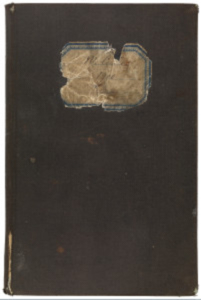
It went very quickly and at the end of it, the book went back into the lead-lined box and we were Geiger-countered again to make sure me and my equipment were safe to go back into the world. Fortunately, I was. The levels of radiation seemed pretty low but there’s still something about that process that was very cinematic. My only experience with a Geiger counter has been from seeing and hearing them in films. So it was a really lovely thing to get to do.
Someone had asked afterwards if it sounded different and I suppose it had its own unique sound but someone wouldn’t hear it and know that, oh, we used the real Marie Curie’s notebook. But there’s something about it being in there, for me and director Marjane (Satrapi), that was this extra layer, this extra emotional connection with the real Marie Curie that we were able to slip into the track. It was really exciting to get to do it.
We worked on the film for eight or nine months, and in that time and in the lead up to it, I had read a lot about her and watched a lot about her. So I was really fanning-out on Marie Curie and to get to see her notebook was a big deal for me. Her actual work is what makes the notebook radioactive. Throughout the film and if you see real photos of her in the lab, there are always notebooks with her. On the cover of this notebook it says, ‘Marie Curie.’ It’s in her handwriting. It’s like anyone who has a notebook and they put their name on it. It’s this genuine artifact from this incredible human being. So this felt like an opportunity that was just too good to miss.
It’s this genuine artifact from this incredible human being. So this felt like an opportunity that was just too good to miss.
I was so happy, even though initially it felt like it wasn’t something that would be easy to do. But, it just became a simple process and the people at the Wellcome Collection were so cool about it. It’s a brilliant institution. The idea that they have this is so great.
In my research on it, I found that it used to be out in the general collection as were other notebooks of hers elsewhere in the world because people didn’t realize they were radioactive. At some point a few years ago, this discovery was made and then these protections had to be brought in around it. So there was a whole history to it that was really lovely.

For your mic selection, what did you choose and why?
SF: I figured that it needed to be as simple as possible so I brought two things. I brought my Sound Devices recorder and two DPA 4060 lav mics, so it could be really simple and small. I didn’t need to set up a mic stand. I wasn’t really sure how much space we’d have and I didn’t want to make it cumbersome or difficult for Stephania. So, the simpler the better.
I also brought a Sony PCM-D50 stereo recorder just as a backup. I set the two of them up, hit record, and we sort of talked and she turned pages, and we interacted. When I got back to my cutting room I edited that single long recording and pieced it together.
I could’ve brought three or four different things and it would have just gotten in the way of what we were trying to do. So I figured the simpler the better.
The DPAs I really love because they are so discreet, they sound great, and you can pop them down anywhere. If you’re putting them down on a surface, unlike a conventional mic, they don’t pick up the noise up through the piece of furniture. So, I figured if we were clumsy then those mics would be the safest bet. So it worked out really well.
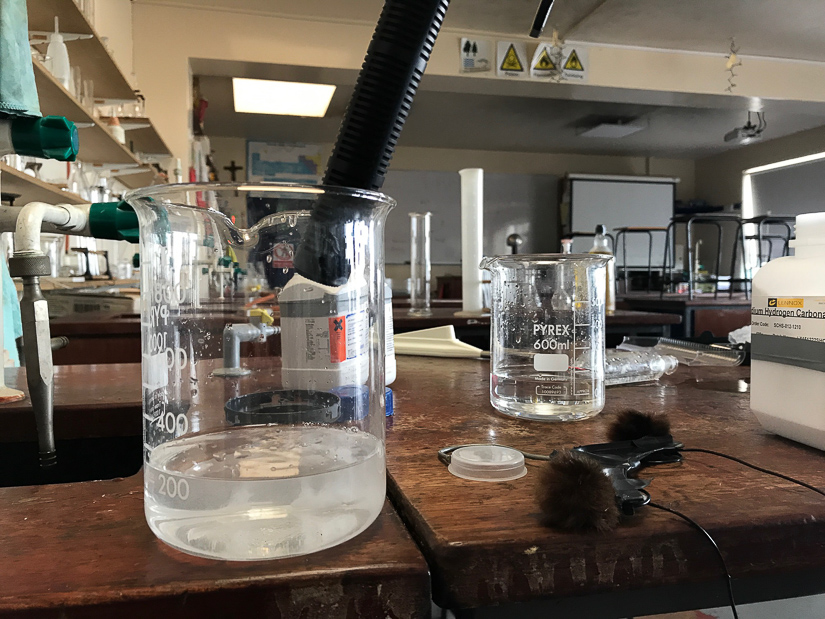
What about the sound of Marie’s lab equipment and her lab environment? Did you capture any custom recordings for those?
SF: I had a lovely experience where, again, we were on the job for a while and I was coming back on a trip to Dublin to spend a bit of time at home. I was home for a few days and in the build up to that I thought about calling my high school chemistry teacher Mr. Brian Wall, and I left him a message saying, ‘Hey, you haven’t heard for me in 22 years but I’m working on this movie and I’d love to come and record the chemistry lab.’
About 30 to 40 minutes later, I got a call back. He said, ‘Yeah, sure! Come by!’
So I let him know when I would be back in Dublin. I got really lucky because it coincided with midterms so the students wouldn’t be around. The school would be empty but he was there doing some work. So, I showed up about 8 AM one morning and he had set up the whole lab for me. He set up all of these experiments that I could do. He said, ‘Do whatever you want. I’ve set up some experiments. If you do this one and you stick a match into it, it will puff and explode. If you put this in here it will fizzle.’
I showed up about 8 AM one morning and he had set up the whole lab for me. He set up all of these experiments that I could do.
So he set up all of these really cool things that he thought would be useful. I couldn’t have asked for better! It reminded me of why I loved him so much as a teacher and why people happen into your life at various moments and are inspiring. It was the fact that not only did he agree to let me do it but he had set it up in such a way that he knew I would get some cool sounds.
So I spent four or five hours there that day just recording. He had given me things to dissolve in acid. I used a Sennheiser MKH 70 — a very directional boom mic — and the DPAs and the Sound Devices recorder. I could put the DPAs into things. I could attach them to a flask if I was dissolving something in it. I could also use the MKH 70 just to point into the flask and get the sound from two different perspectives.
There were all sorts of Bunsen burners from different eras, different ages. I recorded all of those. Sometimes I recorded three or four at once. Sometimes I recorded just one so that we’d have a good variety of material.
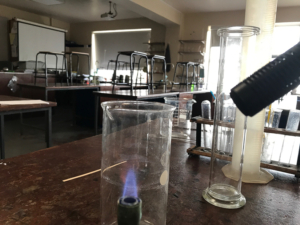
I did all sorts of glassware movement. I set up ambient mics at one point and just spent a whole bunch of time wandering around the room, picking things up and putting them down, figuring these sounds would work in layers for the background of the lab. Whenever Marie is working in the lab, you have the rest of Pierre’s gang also there working. It was never her necessarily on her own. So it was nice to have that detail around her.
Labs are exciting, lively spaces. They are places where people are taking things and breaking them down and blowing them up or distilling them or setting them on fire. It was really important to collect many of those sounds so that we could feather them through those scenes.
People who break ground in any field are people who are passionate about it, who take risks and explore things.
Marjane has this real respect for science as something that isn’t dull. It attracts people who are passionate about it. People who break ground in any field are people who are passionate about it, who take risks and explore things. Science is physical and it’s lively and the film is infectiously about their love for it. It felt like the more that we could build that up with those lively labs and that authentic sound of glass clinks and flasks filling or whatever… All of those things sound so unique and different. If you take any of those measurement devices, like a burette or pipette, and you fill it up with whatever, it sounds different because it has a different shape and a different acoustic. It felt really nice to get a variety of that stuff. It felt like when we were building those lab scenes that we had all these different musical notes from a genuine lab and we could build this kind of tapestry — something that was interesting and not one note.
It felt like this was somewhere we could use sound to bring character and bring detail into the film. You’re always looking for those opportunities in anything you work on, where you’re using sounds that are distinct and they tell some sort of story. The sounds don’t sit on top of the mix; they’re just used as detail that fluctuates but tells you something about the space you are in. They went to great lengths in the film, particularly when they move labs to where they break down the pitchblend.
…I hope it will translate into something emotional and meaningful for the film because my use of it is coming from that emotional place.
There are a lot of people working there, and when they have their breakthrough and get recognized for the Nobel prize, suddenly they have more people working for them because their work is more revered. To be able to express that volume of people and the types of work that they were doing with those sounds was great.
Emotionally for me, it was something about getting to record them somewhere that was important to me — in my old chemistry lab at school. That was lovely as well. You’re always looking for those things in a film, where, if I can bring something that is really personal to me then I hope it will translate into something emotional and meaningful for the film because my use of it is coming from that emotional place.
 Tesla Model X 2015 electric full size crossover SUV sport utility vehicleKrampfstadt Studio65,00 $0,00 $100% OFF
Tesla Model X 2015 electric full size crossover SUV sport utility vehicleKrampfstadt Studio65,00 $0,00 $100% OFF
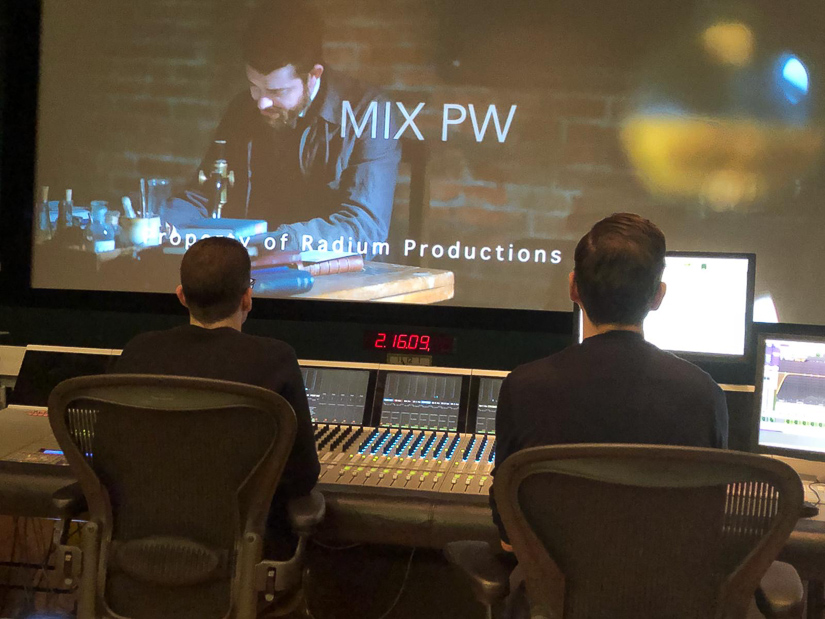
Another element that stood out for me was the angry crowds outside Marie’s apartment. After Pierre’s death, she has an affair with another scientist and the people are yelling at her to go home. Was that all loop, or was there a production track to follow? How did you build those crowds?
SF: The film was shot in Budapest and so there was a production track but none of it was in English because the extras were local. So we used a tiny hint of that because the energy of it was really good. But everything else was loop and some of it was the sound crew, too.
…you have a clear idea of something you can hear in your head and I find it’s really great to perform those yourself to use with the other material.
I have this real obsession, particularly when it comes to that sort of crowd, where you have a clear idea of something you can hear in your head and I find it’s really great to perform those yourself to use with the other material. At the time we were doing that, Jo Jackson (sound effects editor) had a go at it with their distinctive voice and Adele Fletcher (Dialogue/ADR Supervisor at the time) did some stuff as well. I just wanted to try some bits and pieces myself. Then we used a really brilliant loop group here in UK called Sync or Swim. They did an amazing job as well.
It’s important to give full credit to Marjane here. That situation with Marie Curie really happened; those protests happened. Some years after Pierre’s death, she ended up having an affair, a liaison with one of Pierre’s protégés, Paul Langevin. When his wife found out about it, she went public. She hired a private investigator who found a bunch of letters between Marie and Paul. They were published in the newspaper, which you see in the film. As a result, Marie was hounded.
Marjane was really clear…that what was happening to Marie was part of the xenophobia, the nationalism, and blind bigotry of the time. Unfortunately, that’s still very much part of the world we live in now.
One of the things they latched onto was the fact that she was Polish. The other was the idea that she was Jewish, which wasn’t true. She was actually Catholic. Marjane was really clear early on in the process that what was happening to Marie was part of the xenophobia, the nationalism, and blind bigotry of the time. Unfortunately, that’s still very much part of the world we live in now.
When you think about that time in human history, we had discoveries like the Curie’s were making, Einstein doing his major work, electricity being rolled out into people’s houses — all of these amazing things that we associate with modernity. Also, in the 1910’s we were just about to go into the First World War, which led to the Second World War. That xenophobia and hatred that existed and was thrust at Marie at the time was very much what fueled those subsequent wars and are part of any populism that exists today.
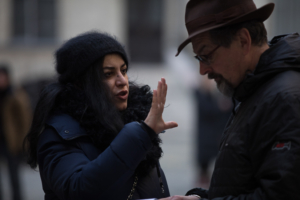
Marjane and I had this conversation about it and she was very adamant about how it should feel like it could almost be happening right now. We were working here in the UK, and Brexit was happening. We were talking about it as outsiders. I’m Irish, I’m a European and I find Brexit absolutely entirely confusing, as does she. Marjane comes from Iran and lives in Paris. So we were coming at it from the same point of view.
I remember one day after our conversation, I was on a train going to work and I was typing on my phone. I was trying to script the crowd and I remember thinking, ‘Geez, if anyone looks over my shoulder they’re going to think I have some serious issues.’
When I got to work that morning I had come up with 30 or 40 things I thought we should record. I got an email from Marjane a few minutes later, jokingly accusing me of being Nigel Farage because of the contents of what I had written!
We knew that it had to echo that…type of reductive populism by reflecting what was going on around us at this very moment in our present. That felt really important to the film.
We knew that it had to echo that, to have that awful quality of that type of politics and that type of reductive populism by reflecting what was going on around us at this very moment in our present — to be able to say this is what was going on then and look where it got us. That felt really important to the film.
Someone like Madame Curie didn’t think about those things. She was someone who was interested in everything. With her work, she didn’t patent anything or copyright anything. Anything she did was free for anyone else to use. So for her to be subjected to that kind of abuse, there’s a great irony and tragedy to it. I think it’s part of what is shown in the film, that some of her life was incredibly tragic despite her incredible achievements and her incredible humanity.
If you think about the way the film opens, Marie is seen as being difficult, by nature of her being a woman and by nature of her being particular about her work — a quality hugely admired in a man and thought of as ‘the male genius’ because he’s complicated or eccentric and that’s forgiven and part of the mythology of what makes him great. That double standard is not fair and she proves it so wrong. That’s part of the beauty of her story.
[tweet_box]The Riveting Sound of ‘Radioactive'[/tweet_box]
Evgueni Galperine & Sacha Galperine – Radioactive OST
Another strong aspect of the soundtrack was the score by composers Evgueni Galperine and Sacha Galperine (OST released via Milan Music). Did you get a temp track of their distinct score? Did you know the music was going to sound like this?
SF: They were on early in the process, as were we. We started around week seven of the director’s cut, so we would have done some sound work when the director’s cut was ready to be presented. So were they. There were demos coming in the whole way through the process.
Marjane’s way of thinking about Marie Curie and thinking about the time was very much an admiration of modernity and that progressive period of intense human discovery and creativity.
Marjane’s way of thinking about Marie Curie and thinking about the time was very much an admiration of modernity and that progressive period of intense human discovery and creativity. She really wanted that to be reflected in the music. From the get-go, they had been talking about having something electronic in the score. Sacha and Evgueni had done some research — they would be better at explaining this themselves — and sourced some very early electronic instruments from that period, probably more like the 1920s or ’30s. But it still fit into that epoch and that time of Madame Curie’s life. Their thinking was that this would be something that would reflect in music and culture the work that Madam Curie was doing.
I think the film does a really beautiful job of that, where you see the discovery of radioactivity leading to all sorts of interesting things like nuclear energy, x-rays, radio therapy, and the darker side like nuclear bombs. There’s a beautiful scene where Pierre is pulling different creations that people have made with radium out of a box. There’s chocolate and soap… this was before anyone knew the negative effects of radiation. It had an effect on popular culture. There were dances that were inspired by radioactivity, clothing that was inspired by radioactivity. So this idea that music could be inspired by it made a lot of sense. Again, that was Marjane’s brilliant mind at work thinking about how science and culture impact each other. That was definitely something they talked about and was clearly an aspect of the score.
So this idea that music could be inspired by [Radium] made a lot of sense.
If you’re not familiar with the work of Evgueni and Sacha, any of their scores are worth seeking out. I had just happened upon them before working on this film because of Loveless; this brilliant Russian film they had done which was Oscar-nominated. It’s a totally stunning, very heartbreaking film but it’s incredibly beautiful. Their score was a real standout score that year. There’s a very particular piece from it where they use a prepared piano almost like a percussion instrument. It’s just incredible. So they’re coming at the music from a very interesting place.
They themselves are both Russian and live in Paris. So, they and Marjane have this relationship based on being from somewhere else and living in Paris and admiring each other’s work. There’s a brilliant collegiality with them.
It was lovely to be around when they recorded the orchestra part of it at Abbey Road. Thankfully that happened over a weekend so I was able to go in and just experience that — it was really lovely to do. It was incredible to watch them. They brought their own conductor, a Russian who also lives in Paris. It was amazing to get to see that craft and that process and to see them work with these amazing musicians in one of the most famous studios on the planet with an incredible scoring engineer/recordist. It was a lovely thing to experience. Any of their work I just can’t recommend it enough. For anyone interested in original score, their work is really fantastic.
The most important thing when you’re hoping the sound design will coexist with the music is making sure there is space for both things and that they work in a way that they are not fighting each other.
Radioactive is one of those films where there’s such an amazing team, put together by Marjane and her producer Paul Webster. It was an inspiration for us as a sound group at every turn because of these people who were involved. For me, having the demos of the score and being able to see where music was placed and how it would work always allows us as a sound crew to then figure out, well, if music is fitting that pocket in these frequency ranges where can we go so we can work with it and complement it and not fight it?
The most important thing when you’re hoping the sound design will coexist with the music is making sure there is space for both things and that they work in a way that they are not fighting each other. They have to work in a way that one can almost hand off to the other and vice versa, so that it becomes cohesive and it feels like they belong together.
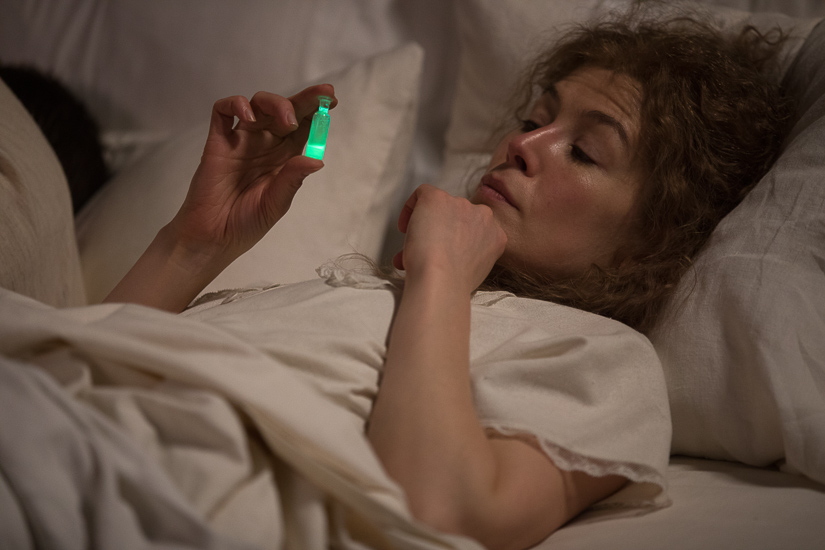
One of the places where sound design and music fit together so well is following Pierre’s death. Marie is lying in bed and she’s having this episode of delirium. How did you use sound to help the audience experience the pain and madness that Marie is feeling?
SF: That was a really interesting sequence to work on. We refer to it as the “Radium Dance.” It’s a nightmare sequence for Marie where she is imagining Pierre’s death. It’s a sequence about grief, and loss, and pain. It was always incredibly, skillfully cut together. Stéphane Roche (picture editor) did an amazing job of cutting something that was physical and emotional as well. It’s stylized editing but entirely emotionally driven. It’s not cool for the sake of cool. It’s cut in a way that has a maximum physical and emotional impact.
It’s stylized editing but entirely emotionally driven.
When he started to work on it before we started work on the film, he had pieced together a few sound effects — a beginning sound design on it. It felt a little bit like an electronic composition. Our first spotting session/conversation with Marjane as we were working toward that initial director’s cut, she wanted us to have a pass at that scene. It was one of the first things I worked on but also one of the last things I worked on because it had to develop and grow with the film as the picture was cut and as we got nearer to lock.
So it was a very collaborative piece. Stéphane used to spend time with me in my cutting room and we’d work through it. He would leave me with some notes and I would work through further.
For my part, a lot of the sound design elements are created using an 808 drum machine.
For my part, a lot of the sound design elements are created using an 808 drum machine. I used lots of electricity. Lots of the sounds in that sequence are short bursts. Sometimes it might be two or three frames of a sound. Sometimes it might be twice that length. But a lot of the material was short bursts. We always knew that it would end with this peak that Marjane had performed. I believe the instrument is called a ‘Santouri.’ It’s almost like an open piano with multiple strings that you hit with hammers that you hold rather than by playing keys. She performed this piece that was really intense and really beautiful and we knew that it would always build to that.
She performed this piece that was really intense and really beautiful and we knew that it would always build to that.
Going back to that modernity concept, other sound concepts we discussed for the film were this idea of what radioactivity would sound like. It doesn’t sound like anything but it can have a feeling that certain sounds can evoke. So that piece is very much an exploration of the extreme of that. It was great to take a drum machine and push it in odd directions. I didn’t want percussive sounds from it; I wanted glitchy, distorted, messed up sounds that I could cut up and piece together to work with that very rhythmic picture cutting.
The other thing we did was to take elements from a previous scene in which Madame Curie is next to Pierre’s coffin. It’s a really upsetting scene because she is saying goodbye. Actress Rosamund Pike gives an incredible performance. Her performance throughout the film is stunning, I think. I’m obviously biased but I think she’s just so good. When she breaks down in that scene, it’s a one take. There was no second take. She went for it and they got it. She has this scream that’s sort of primal, visceral, an absolutely bone-chilling emotional outpouring. We took that and manipulated versions of that throughout that nightmare. I thought about a lot of the sound design in the film as an echo. There’s this concept of throwing a stone in the water and it sending ripples out. I felt like that was a really beautiful thing to keep coming back to with the sound work.
I thought about a lot of the sound design in the film as an echo. There’s this concept of throwing a stone in the water and it sending ripples out.
Another thing that’s happening is this film opens with Madame Curie collapsing. She’s on a gurney and maybe her life is flashing before her eyes and that is what we are seeing and experiencing. I thought that there should always be these echoes throughout the whole film. There are lots of little things that echo through the film. For example, in the “Radium Dance” there is a moment where we see these big Radium droplets fall onto the cobbles and we use the atomic bomb sound from earlier in the film there. It’s a slightly different version of it but it’s the same thing repurposed. There are some of the horse sounds from Pierre’s accident that are in there, but again, used in different ways. Sometimes it’s flipped on its head but it’s the same elements repurposed. It felt like in that scene we needed to have something from the accident. Marie obviously wasn’t there but she can imagine what happens. I think there’s a thing that happens to us all emotionally when we have to think about an awful event that we haven’t experienced. We probably think about it in a way worse way than it actually happened. It felt like whatever Marie was experiencing had to be heightened, had to be about as bad as it could be in her imagination and the sound had to be visceral enough to reflect that. It was trying to build something that allowed us to do that and it had to be something that swells.
The main part of the score in that sequence is the percussion track. Then there is some tonal stuff that we kept from Stéphane’s original work. We changed the shape of it a little bit but some of the more droney, tonal elements are from his original work. Then, there’s all of this extra stuff that we put on top. We were trying to build something that becomes a sonic experience of that grief.
Highlights from A Sound Effect - article continues below:
Much of the film takes place in society but then we have this war aspect at the end. Marie is with her daughter and they’re driving an ambulance out onto the battlefield. It has a mobile x-ray machine in the back. Tell me about the contrast of going from being in society to being in war. How did you approach that sonically?
SF: One of the interesting things about Paris at this time, where the linear part of Marie’s life is taking place, is that we’re at a point in human history where it’s not just horse-and-carts. It’s the beginning of cars, and the consumer ownership of cars. So you have this really interesting mixture of sounds to play with in the backgrounds. We were constantly thinking about that and trying to build this world outside the lab and outside their house that reflected that. Again, it’s the idea of the modernity of the time — the idea of these inventions that were basically changing the course of human history.
Paris itself, we wanted to make it busy, beautiful, and interesting. There were all sorts of real-world sounds that felt like they fit the mold for that. Rather than having an occasional horse-and-cart going by outside, the scenes could also be peppered with a car going by. It was really interesting to get to use those period sounds as well. The relationship between those car engines and the engines we are used to now, they’re worlds apart.
And that distinct sound of wheels on cobblestone is really interesting. I had done a good bit of cobblestone surface recording for something else I had worked on so it was great to be able to pull from those sounds because it’s such a unique sound to hear a tire on a cobble or a footstep on a cobble. Then to add those old engines to that was really lovely.
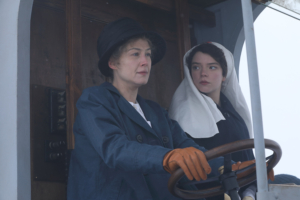
So by the time we are moving to that later chapter of Marie’s life where she’s gone off to the frontlines with Irène her daughter it’s incredible because when you think about any one of Marie’s achievements it would be greater than most people could ever dream of. But this idea that in her later life she figured out how to do mobile x-rays and literally save soldiers lives on the battlefield. It’s incredible.
The truth of that story is that the cars that they drove in, which are called “Petites Curies,” were donated by various affluent Parisians and other people. The war effort had gone on for so long that the government couldn’t buy a bunch of cars so people gave their cars to this cause. They had to figure out how to retrofit them so they could be driven into battle and equipped with these mobile x-ray units.
I found a lot of this history fascinating. And I spent a lot of time watching and listening to other people’s work on films from that era. I ended up doing a bunch of research into what types of artillery and what types of guns people would be using, just to try to create something that felt authentic. It’s quite a dreamy sequence in a way because as we initially join Marie and Irène as they drive towards the war, we tried to have a presence from the frontline but the feeling that it’s far enough in the distance that there isn’t an immediate threat. The next time we see them we are in a camp that is set back from the frontlines. There are soldiers, tents where wounded soldiers have been tended to, and other places where soldiers are being prepared to go to the frontline. There’s a lovely thing happening to the left of that shot and you can see all of these horses. So there were lovely visual indicators of what we could do to build up that camp and make it busy.
Ultimately, something happens on the frontlines that pulls Marie and Irène into the war and so there had to be this message traveling through the camp to them after this event happened. We used a good bit of crowd recording there. I had different recordings of different bits and pieces I had done over the years that would allow us that perspective of voice, of having hundreds of men preparing for battle, shouting at each other and getting ready.
When we get to the frontline and they start tending to the wounded, whatever has happened has moved on so they’re not at a place where they are going to be actively engaged. It was important to have things blowing up around them — but in the distance rather than feeling like it was an imminent threat.
We were trying to paint authentic WWI-sounding moments, but to have it happen on the periphery of what we were seeing.
So that perspective was really interesting and really hard to get right.
We worked on that a lot. It was something that Marjane and Stéphane were very clear about, that there wasn’t going to be someone just to the left or right of them, shooting a machine gun. They would be maybe a mile away from the action. We were trying to paint authentic WWI-sounding moments, but to have it happen on the periphery of what we were seeing. It posed a really interesting challenge. Between the work we did in editorial and the work we did on the mix with Ian Tapp and Andrew Caller, we tried to figure out that perspective and make sure to get it right.
She said, ‘There would be days when our windows would blow out because an explosion would happen somewhere near where we lived. So I know what war sounds like…’
There was an interesting note from Marjane early on in the process — it was in one of our first meetings. (She’s an amazing character. She’s a really smart, funny individual — a really infectious person. I was a huge fan of her work before this.) She said, ‘You know I’ve lived through war, right?’ Because she had lived in Tehran during the Iran-Iraq war. She said, ‘There would be days when our windows would blow out because an explosion would happen somewhere near where we lived. So I know what war sounds like. I need you to make this sound like war I know.’
So it was this brilliant challenge. I had to think about this and it needed to sound authentic, so we talked about it a lot. She talked about the feeling of those explosions going off, and they weren’t necessarily on her doorstep but near enough that she could feel them. So this was one of many brilliant conversations that I had with her over the process. It was one of those really insightful, brilliant takes that she had. I knew that I needed to figure out something that would not only work in the film but would also satisfy that genuine experience that she had. And what an amazing challenge to have to try to figure out.
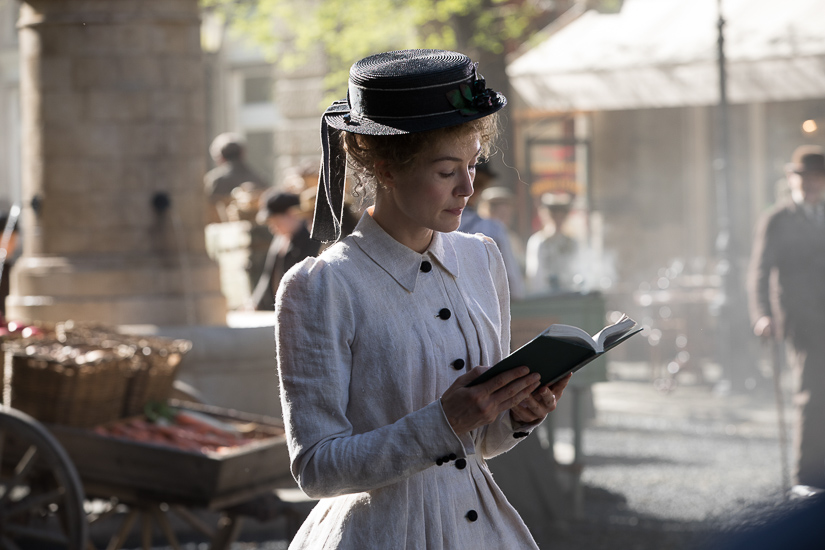
Any other aspects of the sound of Radioactive you’d like to discuss?
SF: It’s really important to talk about the fact that there was a big sound crew on this. We started off relatively small, with myself, Jo, and Adele initially. Then, as the schedule went on we went on hiatus for a little while and the crew changed up. Nigel Mills joined us as the Dialogue/ADR supervisor and my colleague from Ireland, Niall Brady, joined us for the last stages of the dialogue edit. We recorded the Foley and mixed the film at Pinewood Studios so we worked with a brilliant crew there — the aforementioned re-recording mixer Ian Tapp (a phenomenal mixer and a really brilliant presence in the room, a really measured, thoughtful, creative presence on the premix and final mix). It was a real pleasure to work with him and re-recording mixer Andrew Caller (who mixed the effects/Foley). Andrew did lots of lovely things with the sound design and effects and Foley. It was a real pleasure to get to work with them and for me, to be in the UK for the first time working, and to get to work at Pinewood. It’s impossible not to be infected by the film history that is there on the lot. To go out at lunchtime and walk around and see the 007 stage and all these iconic spaces and places that we know and appreciate from film history, there was something really special about that.
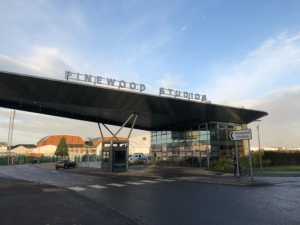
I can’t give enough credit to Marjane for the room she gave us to play with the sound and to experiment with the sound, but also just how precise she was with her notes and her reactions. When she liked something, you really know that she loved it. When you’re in a process for several months at a time, to have that energy come and grab you and say yeah, this is great, that was a lovely way to develop the work.
The relationship that she has with her editor Stéphane Roche and the relationship we got to have with him was really special. His stamp is all over the sound work in the film. The main producer Paul Webster, he was very involved in all aspects of post production and it was great to get to collaborate with him and be part of the lovely little gang that they had around the film. It was a really special team from that point of view.
There’s a lot about Marjane that’s true to Madame Curie; she’s this incredible visionary and independent presence. She’s a really admirable individual who doesn’t look to be liked, but is incredibly likable. Her passion and her drive for the work was really infectious. As I said, I was a big fan and so to get to collaborate with her was amazing. I feel incredibly lucky to work with all of the people we worked with on the film and anything I’ve talked about has been a huge team effort that I just happen to be here talking to you about. It could have been any of us. I feel very fortunate and it would be remiss of me to not mention those people. I’ve probably left some out and I shouldn’t have.
 Tesla Model X 2015 electric full size crossover SUV sport utility vehicleKrampfstadt Studio65,00 $0,00 $100% OFF
Tesla Model X 2015 electric full size crossover SUV sport utility vehicleKrampfstadt Studio65,00 $0,00 $100% OFF

